Mossman lies inland from
Port Douglas, on the flood-plain of the
Mossman River between the Great Dividing Range and the coast, about 70 km north of
Cairns. George Elphinstone Dalrymple's North-East Coast Exploring Expedition of late 1873 brought attention to the resources around the Johnstone, Mulgrave, Russell,
Daintree and
Mossman rivers and from 1874 cedar stands on the latter were being logged extensively. Behind the coastal river plain the Hodgkinson goldfield was proclaimed on 15 June 1876.
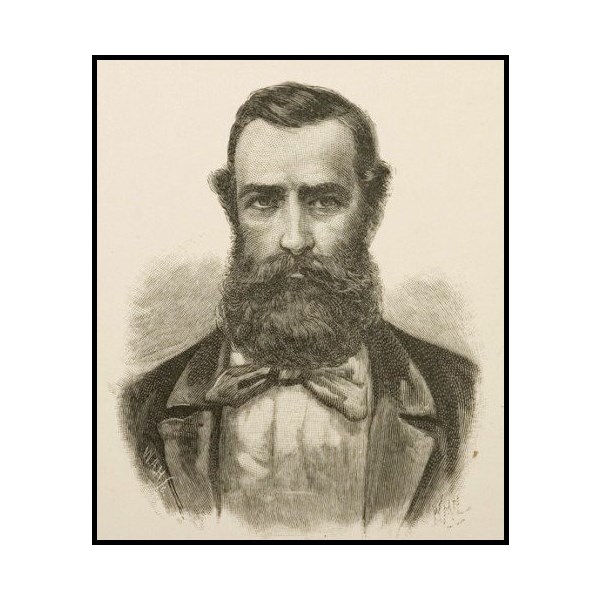
George Elphinstone Dalrymple
Initially accessed via
Cairns, in 1877 a new route between the coast and the goldfields was found and
Port Douglas was established as the new service port about four
miles south of the mouth of the
Mossman River. With the construction of the
Cairns-
Kuranda railway line between 1882 and 1891, however, the importance of
Port Douglas as a town and port declined, while the town of
Mossman emerged in the early twentieth century as the administrative centre of a thriving sugar-growing distric
The district was originally known as
Mossman River after the river which flows through it. The
Mossman River, in turn, was named by the explorer George Dalrymple on 6 December 1873 after Hugh Mosman who discovered gold in Charters Towers. Dalrymple wrote "I named this river the
Mossman River, after
Mossman, an explorer and mining man, member of a very prominent mining family". The town was also known for a brief time as Hartsville after Daniel Hart, an early settler. Later the name was simplified to
Mossman.
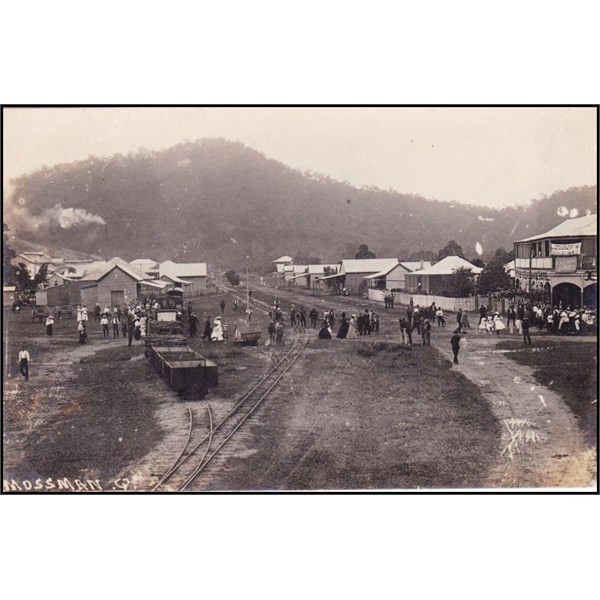
Mossman, north Qld - very early 1900s
River
Post Office opened by 1895 (a receiving office had been open from 1883) and was renamed
Mossman in 1899.
The establishment and subsequent growth of
Cairns and the completion of the
Cairns Railway up through the Barron
Gorge in 1891, gave a more direct gateway to the hinterland but, at this period, it was found that the
Mossman district contained suitable land for sugar-growing. The establishment of the sugar mill at
Mossman formed the nucleus of the town, which grew at the expense of
Port Douglas.
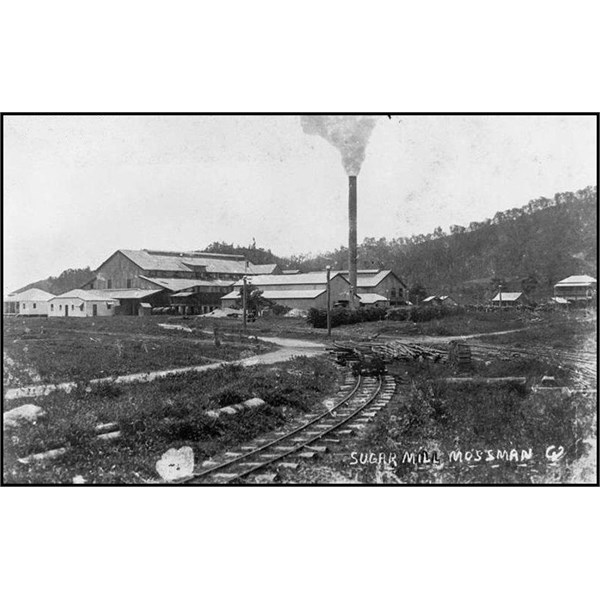
Mossman Sugar Mill, Queensland, ca. 1912
The district was served by two separate 2-foot gauge tramway systems. Both at one time handled passengers and general goods, as
well as sugar cane.
Mossman district owes its present prosperity to these tramways which pioneered the first reasonable transport in the neighbourhood, for trafficable roads followed later.
During World War II,
Mossman was attacked in a Japanese air raid on 31 July 1942. A single flying boat dropped a bomb fell near a house and injured a child
Sub Lieutenant Mizukura made the final raid on what they thought was
Cairns after seeing some lights. At 3.30 a.m. on 31 July 1942 Mizukura reported that he dropped 8 bombs. Where these 8 bombs fell has never been established.
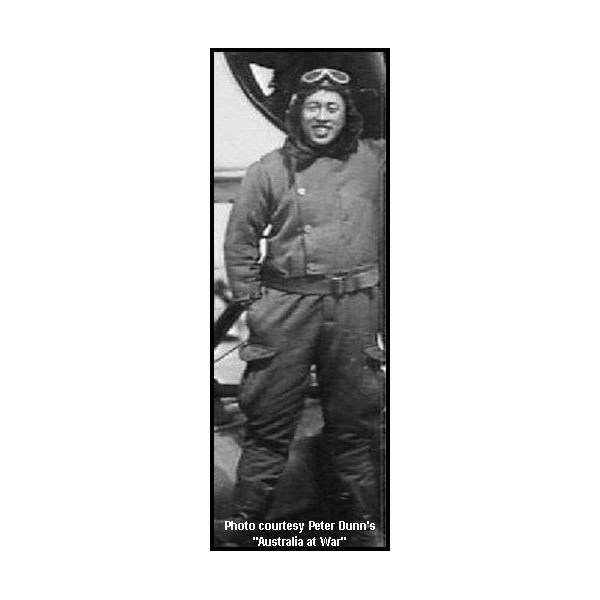
Sub Lieutenant Kiyoshi Mizukura
However one bomb fell that same night on a sugar cane
farm at Saltwater, 16 kms from
Mossman. It exploded about 50 meters from a galvanised shed owned by Felice Zullo. His two and a half year old daughter received a wound to the head from shrapnel which pierced the house and smashed a number of windows. She was in her cot at the time.
The bomb left a large crater seven metres across and one metre deep. Metal fragments from the bomb were later found with Japanese markings on them. Mikukura arrived back at Rabaul at 10.10 am after a 17 hour flight.
The little girl grew up to become Mrs. Carmel Emmi, of
Albany Creek in
Brisbane, Queensland. She was reported in the Sunday Mail in 1989 as follows:-
"My mother said it was
bright moonlit night and very cold. She said the blast woke her and she saw I was covered in blood. She thought I had been killed and started screaming. I know I'm a unique part of Queensland history, but it's something I could have done without."
Carmel spent 3 months recovering in hospital. She has been left with a large scar under her hair.
Mossman Central Mill Company Limited started life as a grower owned co-operative sugar mill back in 1894. In 1897, Mrs Annie Rose fed the first sugarcane into the mill, with the mill producing its first sugar after crushing 27,905 tonnes of cane for the initial season.
In 1906,
Mossman Mill became the first Queensland mill to crush over 100,000 tonnes of cane. That season lasted just under 8 months, extending from June 1906 to late January 1907.
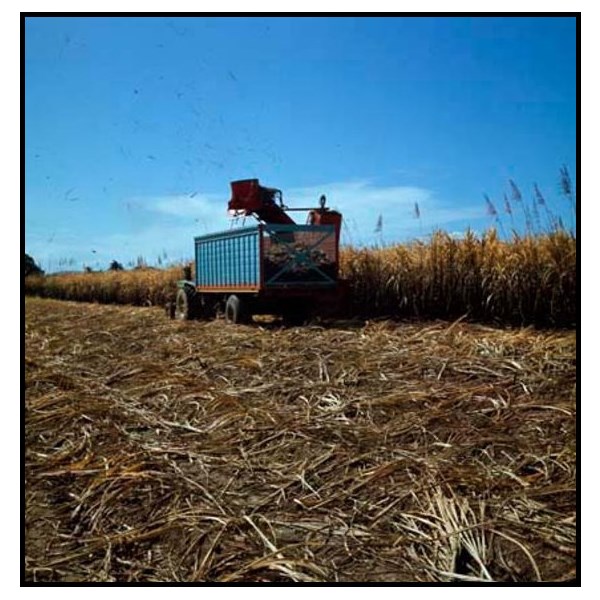
Sugar harvesting Mossman 1969
Initially, sugar was shipped from
Port Douglas, however road transport eventually came to the forefront and became the preferred mode of transport for sugar to the bulk sugar terminal in
Cairns.
L.J.F. Prince (General Manager) pioneered the use of computers for cane payment accounting and, in 1971,
Mossman purchased the first process control computer used in the world sugar industry
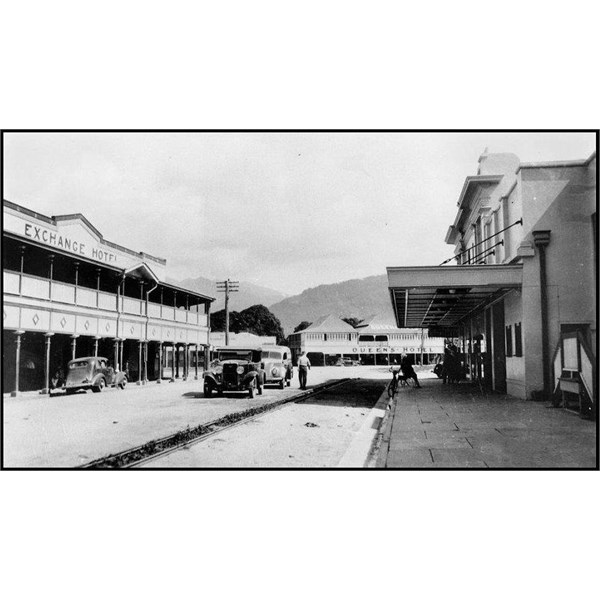
Exchange Hotel (left) in 1940
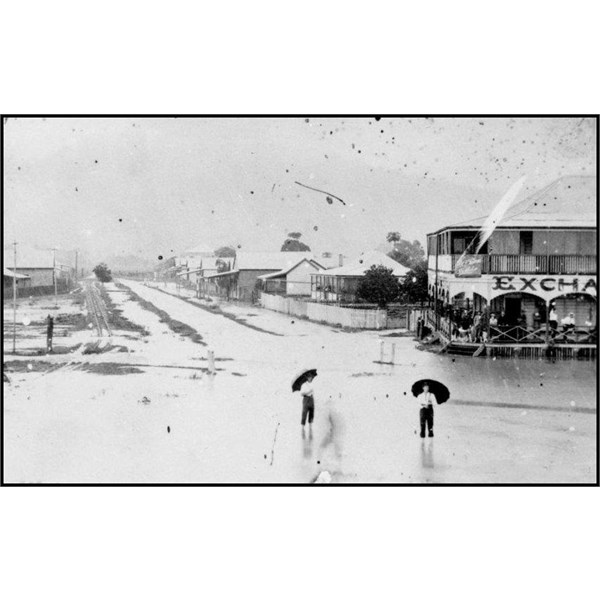
Exchange Hotel during the 1934 floods
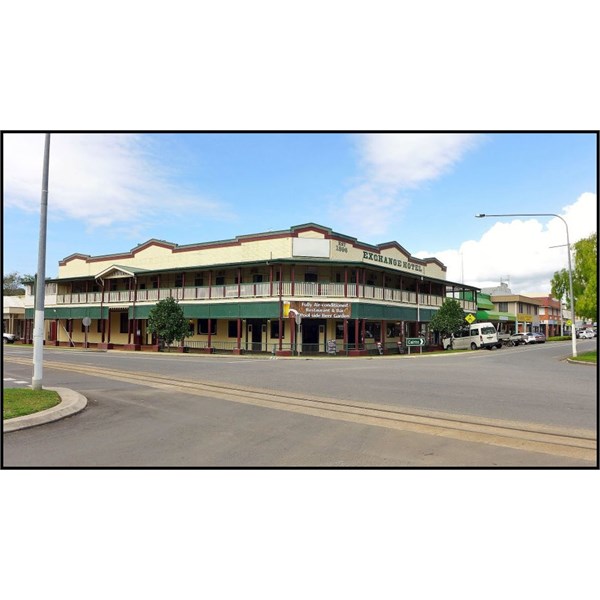
Exchange Hotel, 2015
The Exchange Hotel is the second timber hotel to stand on the prominent site at the corner of Front and Mill streets in
Mossman, a sugar town located about 75 km north of
Cairns. Built in 1934-35 to replace the first Exchange Hotel (c.?1896), which was badly damaged in a March 1934 cyclone, the second Exchange Hotel was designed to appeal to a tourist clientele. Tourism to the district increased after the opening of the
Cook Highway in 1933, with road trips to
Mossman and the town of
Daintree among the local attractions promoted to visitors to far north Queensland.

St David's Anglican Church, Mossman
St David's Church is a small stone and masonry building constructed in three stages between 1912 and 1952 to encompass a porch, nave and apsidal sanctuary, with a vestry and chapel added c.?1982. It replaced an earlier Anglican church on the same site, which was destroyed by a cyclone in March 1911. The original design, as influenced by the architectural traditions of the Byzantine Empire, was completed by the long-serving rector, Reverend Edward Taffs, who drove the project to fruition over the course of his career in charge of the Mossman/
Port Douglas Parish of the Anglican Diocese of Carpentaria (1900-1996). The current church and its evocative setting behind an avenue of mature, fern-clad raintrees (Samanea saman) are situated to the north of the town centre, on the road to
Daintree
The former National Bank of Australasia at
Mossman is a single storey masonry and timber building designed by notable Queensland architect, Lange Leopold Powell (1884-1938). Constructed from 1935 to 1936, this prominent building illustrates the economic growth experienced by regional towns in Queensland sugar producing districts during the 1920s and 1930s.